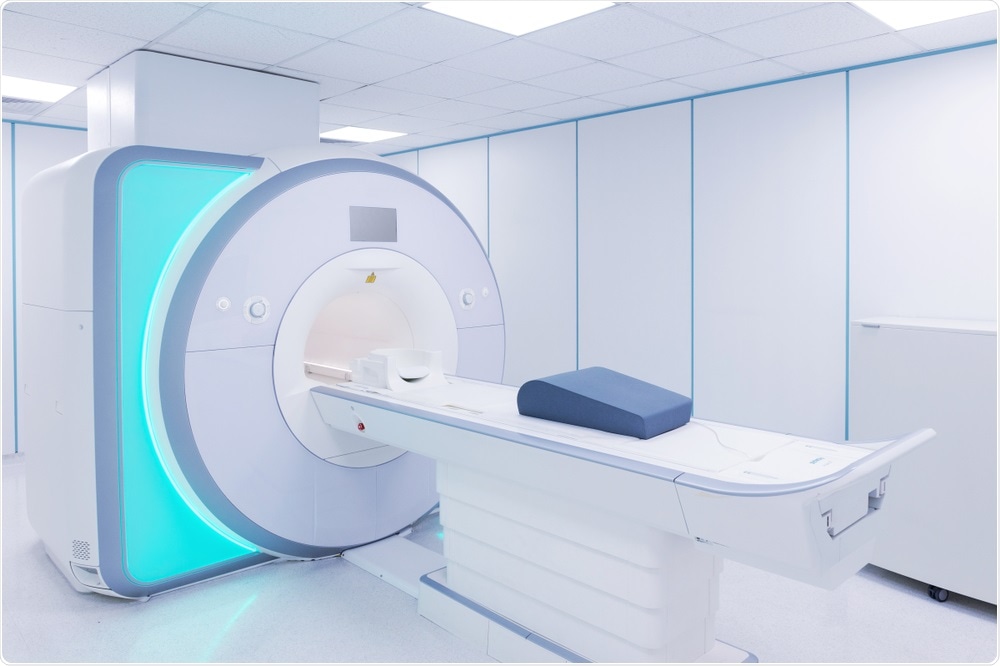The cerebrum is the largest part of the human brain, accounting for about two-thirds of its overall weight.

Image Credit: KaliAntye/Shutterstock.com
The left cerebral hemisphere is responsible for language and speech function, while the right hemisphere processes visual and spatial information.
The formation of this highly complex structure involves various neurodevelopmental processes that are all influenced by genetics. One of these processes - cortical myelination – can be assessed using high-resolution data from relatively new magnetic resonance imaging (MRI)-based techniques.
Studies have found that in humans, the posterior cerebrum tends to be highly myelinated, particularly in regions with the greatest surface area.
Although research has previously pointed towards an association between cortical myelination and cognition, the genetic factors involved remain unclear.
Now, researchers in the United States have conducted an MRI study assessing the genetic variation in cortical myelination among young adults and its association with cerebral surface area, cortical thickness, and intelligence.
In the current study, we performed a systematic examination of the genetics of cortical myelination, cerebral surface area, and thickness at high spatial resolution in a younger adult sample. In addition to examining these measures separately, we also investigated them together via genetically-informative bivariate models and identify genetically-mediated correlates with cognition.”
James Eric Schmitt, Brain Behavior Laboratory Hospital of the University of Pennsylvania
Using data from the Human Connectome Project
For the study, the team obtained vertex-level data from the Human Connectome Project, which holds high-resolution structural neuroimaging data for participants in MRI studies and a wide range of cognitive information.
Vertex-level data was available for 1,096 people (500 men and 596 women) and the final study population included 229 people aged 22 to 25 years, 478 people aged 26 to 30 years, 376 people aged 31 to 35 years and 13 people who were older than 35 years. Overall, data was available for 442 families consisting of up to six family members.
The cortical myelin content was estimated by calculating the ratio of T1-weighted to T2-weighted images, explains the team, and intelligence was assessed using the NIH Toolbox’s ‘Total Cognition’ composite score (NTC).
This toolbox represents a diverse array of measures designed to test cognitive, motor, sensory and emotional function among people ranging from 3 to 85 years of age.
What did the study find?
The researchers report that genetic factors accounted for about half of the individual differences seen in mean cortical myelin, three-quarters of the variation in total surface area and about 85% of the variation in global mean cortical thickness.
The team says that significant genetic variation was observed throughout the whole of the cortex, but both cortical myelination and surface area showed a posterior predominance with the effect being particularly strong in the parietal lobes (involved in touch and vibratory senses) and the occipital lobes (contains the primary visual cortex) and the heritably maps significantly overlapping.
Interestingly, although cortical myelination and surface area exhibited similar heritability patterns, the findings suggested that cortical myelination is genetically independent of surface area at both the global and vertex level. Any genetic associations between cortical myelination and cortical thickness were also weak.
On examining the relationships between anatomic measures and the NTC, the team found there were small but significant relationships between cognition score and cortical myelination in the temporal lobe (involved in memory and speech) and the insula (involved in awareness.)
Associations between cognition and surface area and cortical thickness were less widespread than with cortical myelination.
The authors say that although previous studies have looked at genetically-mediated associations between IQ and white matter fibers, the current study is, to their knowledge, the first to examine cortical myelination specifically.
“To our knowledge, the current study is the first to report heritability estimates of CM [cortical myelination] at the vertex level,” writes the team. “We found weak but statistically significant genetically-mediated correlations between NTC and myelination in the inferior temporal and insular cortex.”
The researchers say the correlations were negative, suggesting that decreased cortical myelination is associated with increased cognition.
They note that if the effect that myelination has on processing speeds is taken into consideration, an inverse association may seem “counterintuitive.” However, other studies have pointed to inverse associations between cognition and myelination, they add.
What’s next?
Finally, the team notes that the correlational patterns between NTC and cortical thickness were similar to those identified between cortical thickness and intelligence quotient (IQ) among late adolescents in one of their previous studies, although they were much smaller in magnitude.
Given that our prior findings were in a pediatric sample, the observed differences in the strength of correlations may be age-related and warrant further investigation,”
Source:
Cerebrum. Encyclopaedia Britannica 2020. Available at: https://www.britannica.com/science/cerebrum
Journal references:
Schmitt J, et al. The genetics of cortical myelination in young adults and its relationships to the cerebral surface area, cortical thickness, and intelligence: A magnetic resonance imaging study of twins and families. NeuroImage 2019, DOI: https:// doi.org/10.1016/j.neuroimage.2019.116319.
Chestnut K, et al. National Institutes of Health Toolbox Cognition Battery. Archives of Clinical Neuropsychology 2014;29(7):692-694 Available at: https://www.ncbi.nlm.nih.gov/pmc/articles/PMC4263919/